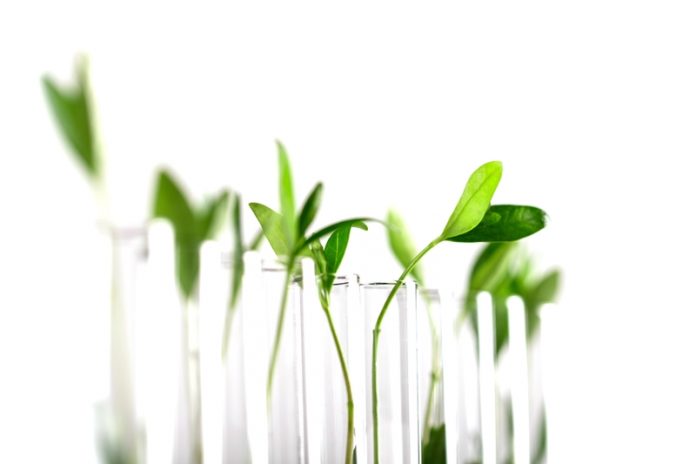Profile by Alison Parkin, the University of York and Jon Lloyd, University of Manchester
A key aim of the Metals in Biology network, one of thirteen UK government-funded Networks in Biotechnology and Bioenergy, is to bring together scientists from academia and industry to work together more effectively. With this remit, the network recently funded two workshops.
The first of these was a meeting entitled ‘Characterising and utilising Rhodococcus enzymes for industrial biotechnology’ held in York in November 2015, organised by Alison Parkin (University of York) and Colin Murrell (University of East Anglia).
Rhodococcus bacteria are inspirational chemical factories; they are able to use enzymes contained within their cells to beneficially breakdown a dazzling array of molecules. For example, they can degrade compounds from explosives such as RDX (royal demolition explosive) to volatile organic compounds such as isoprene, the molecule released by trees in such large quantities that it causes the blue haze of the US Blue Ridge Mountains.
The enzymes which confer this activity upon Rhodococcus contain metals, so harnessing this biochemistry will facilitate new industrial bio-based tools that will allow highly efficient and sustainable chemical processing. Examples include tyre-recycling – exemplified by Recyclatech, a company which uses biological sulphur removal to reprocess waste rubber tyres into reusable rubber – and environmental clean-up, where research by Neil Bruce (University of York) develops grasses which use Rhodococcus enzymes to detoxify weapons manufacturing and testing sites.
At the meeting, scientists discussed opportunities for developing new Rhodococcal-derived bio-fuel production systems (Tim Bugg, University of Warwick), anti-microbial and immunisation strategies (Jose Vazquez-Boland, University of Edinburgh), and achieving low-cost chemical manufacturing (Tom Smith, Sheffield Hallam University; Colin Murrell and Neil Bruce). New chemistry-derived tools for accessing previously hidden biochemical information about Rhodococcal enzymes were also described by John Slattery, University of York and Alison Parkin. Nagamani Bora (University of Nottingham) and Christopher Corre (University of Warwick) exemplified ways in which cutting edge analysis of genetic sequencing can unsilence Rhodococcal biological activity – such as antibiotic drug synthesis – that is not readily accessible in a laboratory setting.
The meeting highlighted that the UK has a wealth of biotechnological expertise, which ranges from microbial discovery through to industrial processing at international companies such as Piramal Healthcare. Facilities such as the Centre for Process Innovation offer a rapid route for commercialisation of new biochemical discoveries. A limitation in the field of Rhodococcus research is the need for a robust and optimised toolkit to enable enzyme extraction and manipulation.
Now that a community of scientists has been assembled who share world-leading expertise in probing, understanding and manipulating the genetics of Rhodococcus microbes to achieve industrial biotechnology, with this activity championed by Jon Marles-Wright and Louise Horsfall of the University of Edinburgh, we will move towards open-source sharing of our methodologies.
The second meeting supported by the Metals in Biology network focused on ‘Industrial applications of metal-microbe interactions’ and was held on 9-10th November 2015 at Charles Darwin House in London. It was organised by Jon Lloyd (University of Manchester) and the Microbiology Society.
This meeting brought together a broad range of specialists from academia and industry – who study and use the complex interplay between microbes and metals – with the goal of strengthening fundamental and translational research activities. Co-support from the UK Geomicrobiology Network (a special interest group of the Mineralogical Society) and the British Mycological Society helped to promote a genuinely cross-disciplinary meeting.
The meeting, which featured contributions from academic groups augmented by talks focused on industrial needs, was built around four themes: A session on biomining, describing advances in the understanding and application of microbes to leach valuable metals from low-grade ores, kicked off the meeting and featured talks by Chris Bryan (University of Exeter), Barrie Johnson (Bangor University) and Carlos Frias (Las Cruces Mine, Spain). Metal bio recovery and bioprocessing was the focus of the second session. Speakers included Piet Lens (UNESCO-IHE, the Netherlands) and Lynne Macaskie (University of Birmingham) describing how biologically mediated processes can convert even the low concentrations of metals found in wastewater into potentially useful nanomaterials, such as catalysts. Andrew Moore from Northumbrian Water gave a valuable industrial perspective on this area.
Day 2 began with discussions on the bioremediation of metals, with talks from Julian Bosch (University of Duisburg- Essen, Germany), Graeme Paton (the University of Aberdeen and Remedios Limited) and others describing how bioremediation can be used to clean contaminated land. A talk from Joe Small (National Nuclear Laboratory) described the unique challenges faced by the nuclear industry in this area. A final session on biofabrication of higher-value products, including metal-containing enzymes and inorganic nanomaterials completed the second day, including talks on the incorporation of the iron-containing compound haem into target proteins (Nick Le Brun, University of East Anglia) and the consequences of incorporation of incorrect metals into enzymes (Kevin Waldron, Newcastle University).
In total there were 74 attendees at the meeting, who presented 28 oral presentations and 20 posters. Feedback from the meeting was very positive: the majority of respondents noted that they had attended in order to network and to update their knowledge on the latest research. All respondents noted that their objectives were met fully, and the conference was rated excellent (73%) or very good (27%).
Importantly, discussions at the meeting identified several new proposed areas proposed for follow-up meetings, including environmental microbiology, industrial applications of geomicrobiology and the role of microbiology in the energy sectors. It was clear to the organisers that the support of the Metals in Biology network was key in making the meeting a success.
Alison Parkin
Lecturer
University of York
Tel: +44 (0)1904 322561
alison.parkin@york.ac.uk
https://www.york.ac.uk/chemistry/staff/academic/o-s/aparkin/
Jon Lloyd
Professor
University of Manchester
Tel: +44 (0)161 2757155
jon.lloyd@manchester.ac.uk











